#diurnal moth
Explore tagged Tumblr posts
Text
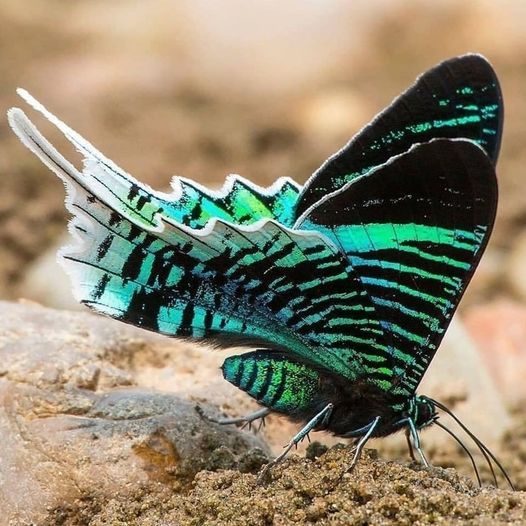
Green-banded Urania Moth (Urania leilus), family Uraniidae, found in South America and the Caribbean
Diurnal Moth
photograph by butterflyrealm
3K notes
·
View notes
Text
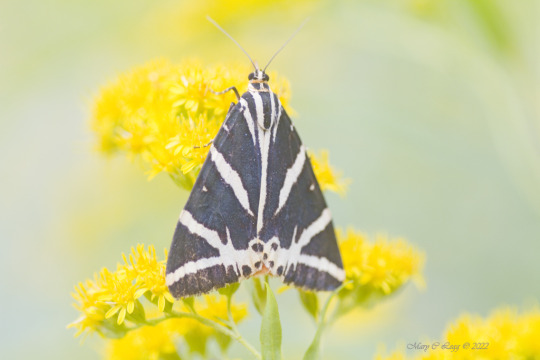
Jersey Tiger Moth, Euplagia quadripunctaria Canon 400D EF 00 2,8 f/2.8 1/250 iso: 200
#Srbsko#Czech Republic 5/20/2016#mothsmatter#Erebidae#noctuidae#diurnal#MothsMatter#moths#Lepidoptera#insects#invertebrates#Macro#Grasslands#macrophotography#insectphotography#insect#canon#butterflies#savebutterflies
2 notes
·
View notes
Text
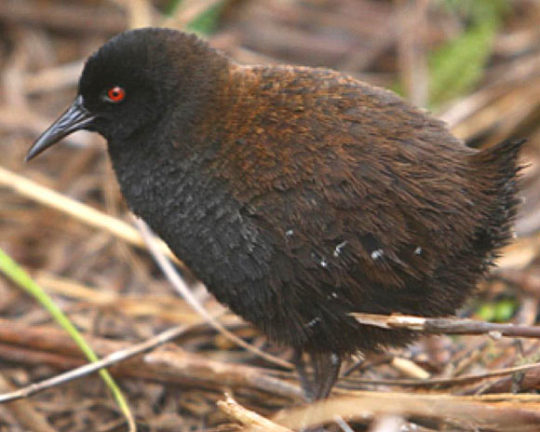
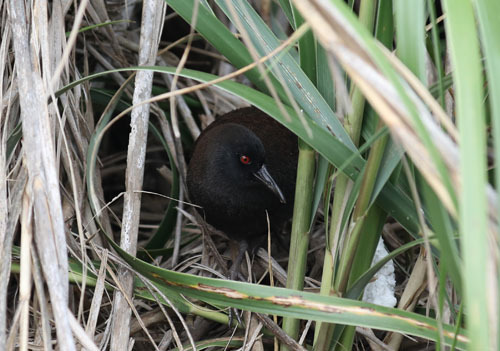
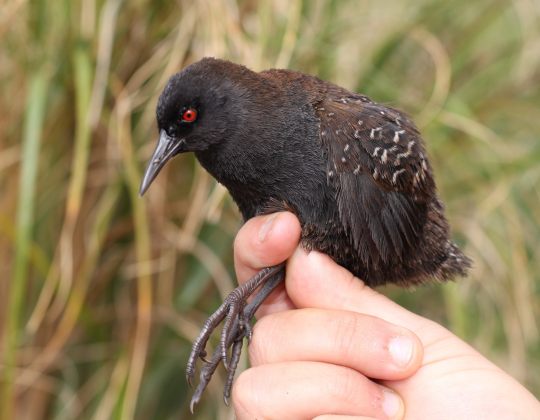
Access Denied: The Inaccessible Island Rail
The Inaccessible Island rail (Laterallus rogersi) is a rarely seen member of the rail family, Rallidae. Part of the reason for its obscurity is the place in which it resides: Inaccessible Island, part of the Tristan da Cunha archipelago in the southern Atlantic Ocean. These islands are extremely remote, and until 2019 it was unclear how L. rogersi even came to be there. We now know that the species colonized the island some 1.5 million years ago, originally coming in from South America and subsequently losing its ability to fly.
In addition to its unique evolutionary history, the Inaccessible Island rail's greatest claim is that it is the smallest flightless bird in the world. Individuals weigh between 35 to 49 g (1.2–1.7 oz) and can be 13 to 15.5 cm (5.1–6.1 in) long from beak to tail. Members of both sexes are dark brown with red eyes; some may have white striping along the underbelly or wings. Females tend to be slightly smaller and lighter in color than males.
The Inaccesible Island rail can be found on all habitats on the island in which it inhabits; these include low mountains and fern brush though the species is most abundant in the grasslands that grow close to the rocky shore. Within these habitats, L. rogersi is largely diurnal. They freely forage for invertebrates, including earthworms, beetles, and moths, as well as seeds and berries; as they have no natural predators they have few defenses against potential threats, although they can run extremely fast when alarmed.
Adults are highly territorial, and when two rivals of either sex encounter each other they will display by lowering their heads, circling each other, and calling loudly until one of them concedes. Males and females mate for life, and build nests in the tall grass. The breeding season is between October and January, in late summer, and females lay a clutch of 2 eggs. Both parents take turns incubating the eggs until they hatch. Chicks can be vulnerable to predation by the migratory brown skua, so parents guard the nest fiercely. The time it takes for chicks to fully mature is unknown, as is the average lifespan in the wild.
Conservation status: The Inaccessible Island rail is considered Vulnerable by the IUCN. The island's population is believed to stand at about 5,600 adult birds. While the island's ecology is currently stable, researchers believe the species would be seriously imperaled if invasive species such as house mice, feral cats and brown rats were introduced. Access to the island is currently restricted, and the island has been declared a nature reserve by the Tristan da Cunha Island Council.
If you like what I do, consider leaving a tip or buying me a kofi!
Photos
Peter G. Ryan
#inaccessible island rail#Gruiformes#Rallidae#rails#birds#islands#island birds#grasslands#grassland birds#Atlantic ocean#animal facts#biology#zoology
950 notes
·
View notes
Note
If the Summer Court/Light Court are all butterflies, would that make the Winter/Dark Court beetles/spiders?
The Summer courtiers generally have diurnal wings, though it's not always the case. Butterflies are the most common but you can get damselflies, dragonflies, bees, grasshoppers, etc etc. If you'd expect to see it bumbling around a warm field full of wildflowers, you can find it in the Summer court.
In the Winter court you tend to see nocturnal wings, but not always - the general rule is that the wings are somewhat cold resistant. Fluffy moths, wood wasps, fireflies, many MANY varieties of hardy beetle. Summer courtiers have to do well to protect their wings when visiting Winter; it's not uncommon to have parts of your wings freeze and die.
It's the fae world. Things don't always make sense.
231 notes
·
View notes
Text

Okalivember day 27, eyespots!
The green-mantled zviarakulla lives in large flocks in tropical rainforests. When threatened, they all take off at the same time, taking a second to flash the eyespot on their wings to startle the predator.
The lucidum moth has reflective iridescent eyespots. Mostly diurnal, they live in open forest environments, taking advantage of areas of dappled light to make their "eyes" flash before retreating to the shadows.
The eyespot atizo is a large marine crustacean. It lives near coasts, and is very active, flittering its antennae about frantically in search of food, and swimming away extremely fast when it needs to.
#okali#fantasy#wandering okali#art#graphi's things#worldbuilding#species#speculative biology#specbio#xenobiology#fantasy biology#fantasy creature#creature design#okalivember
66 notes
·
View notes
Note
do you know any cool moth facts? i totally understand if not, i just wanna get over my phobia by noticing how cool they r ^_^
thanks ! have a good day
“moths” is a huge category of animals, so if you were asking for cool adaptations in particular species you’ll have to be more specific because it’s impossible for me to know where to start!
but a few general moth facts:
moths have been around a long time, and some basal types still exist that have mandibles (like the usual bug mouthparts you see in beetles/ants) instead of a tube proboscis for drinking nectar like most of the big moths you see. these moths are all super tiny and mostly eat pollen.
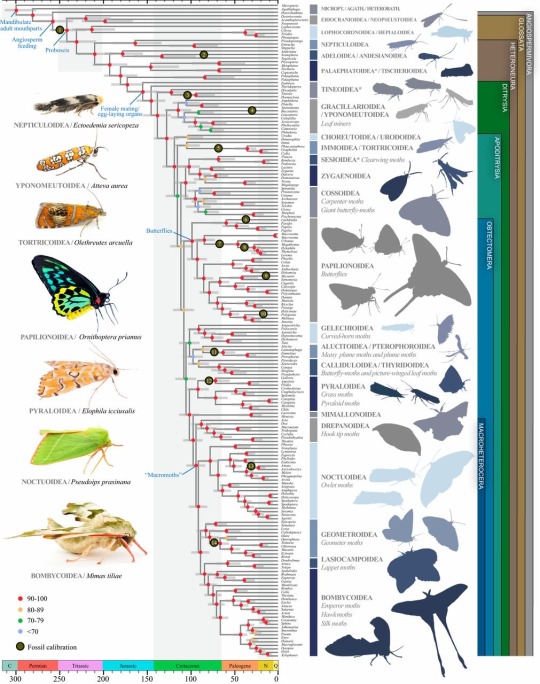
as you can see from this phylogenetic tree, butterflies are moths! or rather “butterfly” is just the English word for a particular group of diurnal Lepidoptera, sort of like how birds are a particular group of dinosaurs (but it’s not common to refer to them as such outside of taxonomy or a joke)
most moths are nectar-feeders, but others feed on decaying fruit, tree sap, or honeydew, and silkmoths and many hawkmoths do not feed at all as adults, relying on larval fat reserves to power them through their brief adult lives
there are numerous diurnal moths, beyond just the butterflies. family Uraniidae are some of the most dramatic:
moths have some of my favorite mimicry examples of any group of insects:
many moths mimic bird poop (birds aren’t likely to look for meals out of their own poop!) but Macrocilix maia takes it a step further and has patches of colored scales that look exactly like red-eyed, shiny-winged flies eating the bird poop!
a number of tiny moths’ wings mimic jumping spiders, which might seem an odd choice until you realize that jumping spiders—predators of these moths—have excellent facial recognition. even if the jumpers would eat another spider, the oOOo pattern tricks them into thinking their that spider is looking right at them, and can’t be taken by surprise.
phylotree from: https://www.pnas.org/doi/10.1073/pnas.1907847116
moth enthusiasts: feel free to add cool moth facts if you’d like!
660 notes
·
View notes
Text
87 notes
·
View notes
Text
Heart as a moth and Mind as a butterfly, specifically the purple thorn moth for Heart and the purple emperor butterfly for Mind cuz ya know, moths are nocturnal while butterflies are diurnal soooo
#plushy rambles#chonnys charming chaos compendium#cccc#cccc heart#cccc mind#aka my perfect excuse to connect 2 of my interest#I adore animals and I love cccc guys#(on another note I do love the bird Heart stuff too like omg HELL YEAH!!)
30 notes
·
View notes
Text
Alien Abduction AU - Species list + info
This is a list of the alien species and traits that I've come up with for some of the TWST characters - I mostly mushed certain animal traits together and built off of that lol. If anyone has any thoughts about my ideas then do feel free to let me know! My askbox is open for messages!
[POSTED A DRAFT BY MISTAKE - IMMA EDIT AND REBLOG THIS ONCE IT'S DONE]

Edonal
Hegehog-like aliens with a similar build to caterpillars.
Edonals are a species that is shorter by average, standing at an average height of 4'8-5'6 - although someay be taller or shorter depending on genetics.
They have eight limbs - two to four being used for walking whereas the others function as hands. Their choices on how they use their limbs can be affected by their need or desire to multitask, or the need to have extra stability for whatever reason.
Edonal communities have a mix of diurnal and nocturnal Edonals in order to maintain a smoothly running society that remains active both night and day.
Riddle, Sam

Avian
Trey (Violet-Green Swallow), Rook (Martial Eagle), Crowley (Crow)

Mairan
Butterfly or Moth-like aliens with more human-looking limbs and faces.
Mairans have eerily human-like faces and limbs, however they are often far more slender to allow their wings to lift them off of the ground. Their body - besides their wings - is protected by chitinous plating and their mouths actually open up more similarly to mandibles than human mouths.
Some species of Marian may grow soft, fluffy fur on top of their chitinous plating as an adaptation to survive colder climates or to blend in better with their surroundings.
Cater (Orange-Tipped Oakworm Moth), Vil (Mourning Cloak Butterfly), Epel (Chalk Hill Blue Butterfly)

Nelsian
Fox-like aliens with much shorter, rabbit-like, tails and stronger legs. They are also, on average, much fluffier than normal foxes unless they're adapted specifically for hot environments.
Ace (Red Fox), Kalim (Fennec Fox), Idia (Silver Fox), Ortho (Cybernetic Silver Fox)

Thesti
Canine species with a large range of appearances depending on their genetics. 'Thesti' is generally seen as an umbrella term containing many subspecies.
Deuce (Pitbull), Ruggie (Hyena), Jack (Wolf), Sebek (Cavalier King Charles Spaniel), Silver (Saluki)

Lonkat
Feline aliens with Scorpion tails and chitinous plating in some areas of the body. Lonkat Royalty is made up of those who are similar to Terran 'big cats' - whereas common society and lesser nobles are more similar to either domesticated or 'lesser cats' Such as Cheetahs or Pallas's Cats.
Leona (Lion), Trein (Persian Cat)

Chel'ir
An aquatic species that serves as an umbrella category for many subspecies.
The Chel'ir are the newest species to have joined the galactic union.
Jade, Floyd, Azul

Rilkol
Jamil

Thrican
Malleus, Sebek

Yelten
Bat-like
Lilia
#disney twisted wonderland#disney twst#twst#twisted wonderland#twst au#twisted Wonderland au#twst alien AU#twisted Wonderland Alien AU
35 notes
·
View notes
Note
can't send an image on anon but bella moths are lovely oddities. they're diurnal, they eat poisonous seeds to make themselves dangerous to predators, and they're quite colorful


bro holy shit they're gorgeous. that's so fucking cool tjank you so much
24 notes
·
View notes
Note
If you could be a moth, which moth would you be?
It would be Humble Hummingbird Hawkmoth !
Their larva has a very spiky horn on their butt
They love sweeties
They're so cute and fluffy
They're diurnal moth so there is less danger to artificial light
They're very very passionate and swift

14 notes
·
View notes
Text

Satin-green Forester Moth (Pollanisus viridipulverulenta), family Zygaenidae, SW Australia
Diurnal Moth
photograph by Boobook48
549 notes
·
View notes
Text
unrelated to literally everything else. stanford pines is a fake moth fan who doesnt know the difference between a moth, a butterfly, and a skipper. the antennae of his "goth moth" in the book of bill are Clearly knobbed at the end, which makes it a butterfly. he must be ascribing to the fallacy that moths are typically grey/desaturated while butterflies are not, or that moths are nocturnal and butterflies diurnal, but those are not universal rules- while the antennae shape is.
9 notes
·
View notes
Text
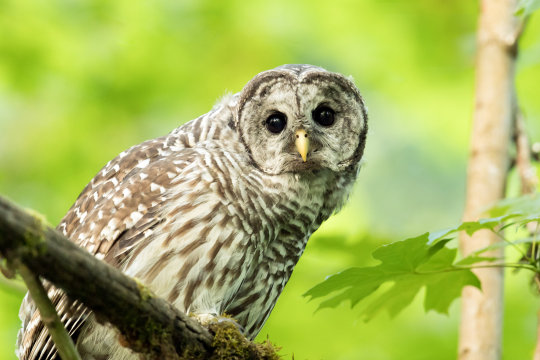
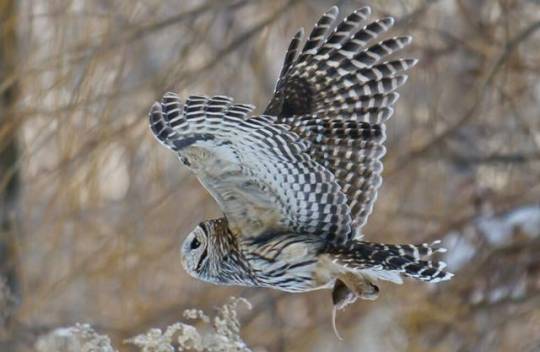

The Basics on the Barred Owl
Strix varia goes by many names: the barred owl, the northern barred owl, the striped owl, the hoot owl, the eight-hooter owl, or the who-cooks-for-you owl. The last few names refer to the owl's distinctive hooting call, which is often followed by what is often described as 'maniacal laughter'. The barred owl is native to the old-growth deciduous and coniferous forests of eastern North America, though in recent decades the species' range has expanded across the Rocky Mountains into the Pacific Northwest.
The striped owl can be hard to spot, due to its white and brown plumage. The back and wings are brown with white barring, while the chest is dull white or gray with brown streaks. The face is surrounded by a gray-white disk and framed with a brown mask. This coloration allows the barred owl to blend in seamlessly with the upper forest canopy where it resides-- although some populations in the southern parts of its range have been known to carry a pink tint due to the amount of shrimp they eat. However, S. varia is not a small birds; adults can be anywhere from 40 to 63 cm (16 to 25 in) in length, with a wingspan of 96 to 125 cm (38 to 49 in), and weigh about 630 g (22.2 oz) on average.
Like most owls, the barred owl is primarily nocturnal, though they can be fairly active during the day. When dormant, they roost in tree hollows or nests abandoned by other birds. At night, adults are active in guarding their territory and hunting for small mammals, birds, reptiles and amphibians, and large arthropods like moths and crayfish. The only natural predator of adult hoot owls is the great horned owl, which will often drive S. varia from their territory. Eggs and nestlings are sometimes prey for raccoons, weasels, and diurnal birds of prey.
S. varia mates for life, and couples are fiercely defensive of their territories and nests. Courtship and territory establishment begins in late winter, and continues from February to April. Males attract mates with their distinctive who-cooks-for-you call, and further entices prospective females with head bobbing and bowing. Together, the pair then establishes a roost and the female lays up to 5 eggs. She alone incubates the clutch for about a month, while the male hunts for her. After hatching, the female continues to care closely for the chicks for another 2-3 weeks, at which time she joins the male in hunting.
Hatchlings quickly become active, and are prone to falling out of the tree, but even at only 4 weeks old they are able to climb back up the trunk. Siblings have been recorded as being tight-knit, often staying close together in the nest and when learning to fly. Fledging begins at about 6 weeks old, and by 10 weeks young are capable of short flights. However, parents continue to provide care to their chicks until they're 6 months old, at which time the young owls leave (or are forced to leave) and establish their own territories. Mortality in barred owls is highest in their first year of life, and once out of this perilous stage individuals may live to be up to 18 years old in the wild.
Conservation status: The barred owl is a common species, and is considered by the IUCN to be Least Concern. The expansion of its range into the Pacific Northwest is considered one of the major causes of the decline of the northern spotted owl.
If you like what I do, consider leaving a tip or buying me a ko-fi!
Photos
Mick Thompson
Hal Thrachtenberg
Mark Musselman
#barred owl#Strigiformes#Strigidae#earless owls#true owls#owls#birds#deciduous forest birds#evergreen forest birds#north america#eastern north america#biology#zoology#ecology#animal facts
195 notes
·
View notes
Text
BLINKY HEADCANONS
Man I am on a ROLL *cracks knuckles* I have a lot for him
• Blinky actually works at Watcher World- like he does physical labor. The other Lords cannot compare to his 'sick gains' (Blinky says that not me)
• Not only is he an iPad kid but also he is the most tech knowledge Lord(i wanna say 'tech savvy' but I don't know what that means- and I'm lazy). He has to teach the others about technology and how to use it. (Tinky refuses these lessons)
• The mallet seen in Watcher World (episode) he actually carries around like Thor's hammer. It's about half his height and completely made out of metal. Blinky is jacked and no one can tell me otherwise, I think it's funny.
• He actually treats his Snniggles really well- working at Watcher World for Blinky's sniggles is considered like, a REALLY big and awesome opportunity. The Sniggles that work for the Blinky's Musical Extravaganza Through Drowsytown thingy are Blinky's least favorites (they don't know that) but they are still treated well.
• Snnigglette is Blinky's favorite snniggle and he treats her like those munchkin cats.
• Blinky has around 20 different outfits he wears for Watcher World occasions and scenarios. I imagine they are all really complex outfits EXCEPT his usual one that he has under his hoodie.
• He wears his Watcher World uniform underneath his hoodie. He finds all clothes comfortable as long as they aren't stuff that set off his sensory issues (wool and corduroy).
• Can NOT sleep without a nightlight.
• He is nocturnal forced to be diurnal because all the other lords are ^_^
• Thorough fan of cowboys and Jack Bauer + McDoon for no specific reason
• He doesn't like arcade machines and has been scared by one before (he smashed it to smithereens)
• He wears contacts and sometimes wears those silly colored glasses with lots of stringy hangy bits.
• The hoodie he wears has eyeballs on the strings which are actually chewy thingys. He gets bored while zoning out and will start chewing on his fingers and clothes (like a moth), so to prevent himself from damaging anything he owns and his physical form- he has the chewy eyeballs.
• I don't think any of the Lords actually have physical forms- they have incomprehensible forms and that's it. What they DID do, is get some humans and make deals with them. When the humans die, the Lords get their bodies to use for eternity. Blinky was the last one to get a physical form because he was nit picky. THEN we get the happenings of TTO and he made a deal with Craphole.
#not art#the lords in black#bliklotep#blinky#blinky npmd#lords in black#hatchetfield#hatchetverse#npmd#trail to oregon#headcanon#headcanons#hatchetfield headcanon#blinklotep
31 notes
·
View notes
Note
I apologise if you didn't want a yap sesh but I love animals and since you asked I HAVE to share all of my favourites ദ്ദി(。•̀ ,<)~✩‧₊
My favourites are split into different sections:
MAMMAL : bat eared fox

My reasoning? LOOK AT THOSE MAJESTIC EARS (˃̣̣̥ᯅ˂̣̣̥) they're so adorable
Facts :
- termites make up 70% of their diet
- they have more teeth (46 - 50 ) than most mammals
- family may contain an adult male and up to three adult females with their pups
- they communicate using those giant ears and their tails
AQUATIC ANIMALS : sea bunny

Reasoning : They look so fluffy and squishy, like dough. Also, bunny? Cmon, everyone loves anything associated with bunnies
FACTS :
- their colours can range from yellow to brown
- the little black dots all over it are caryophyllidia
- those lil ears are sensory organs
- all sea bunnies are hermaphrodites!
BIRDS : Snowy owl

Reason : call me basic but I think they're so majestic, and terrifying, definetly terrifying. I hate birds but I wouldn't mind pigeons and owls being the only ones around.
FACTS :
- their wingspan is 3-4 feet on average
- male snowy owls are almost entirely white while females have the dark bars (so the pic is a female!!)
- snowy owls are diurnal (opposite of nocturnal)
- they swallow their prey whole
INSECTS : Venezuelan Poodle Moth

Reason: fluffy
FACTS :
- Nobody believed this existed when it was first found, and trying to find a *real* picture of this moth is very hard because of all the fake (cotton) ones, like the really popular picture everyone knows. That's because there's only one accepted as real.
- Literally nothing is known about this species
- it exists in the rainforest
- bats are one of its predators
REPTILES : spiny bush viper

Reasoning: LOOK AT ITS LITTLE FACE (TwT)
FACTS :
- only grow to 29 inches for males and 23 inches for females
- Males have long and slender bodies compared to the more stout bodies of females
- they're nocturnal
- no antivenom exists for their bites
ALSO I LOVE JAGUARS TOO!!! Big cats will always steal my heart </3
omg i love this info dump sm 😭 i am adding sea bunnies and spiny bush vipers to animals i think are cute lol. you don’t like birds ?? 😧 i’m a hawk enthusiast they’re oddly cute to me.
15 notes
·
View notes



